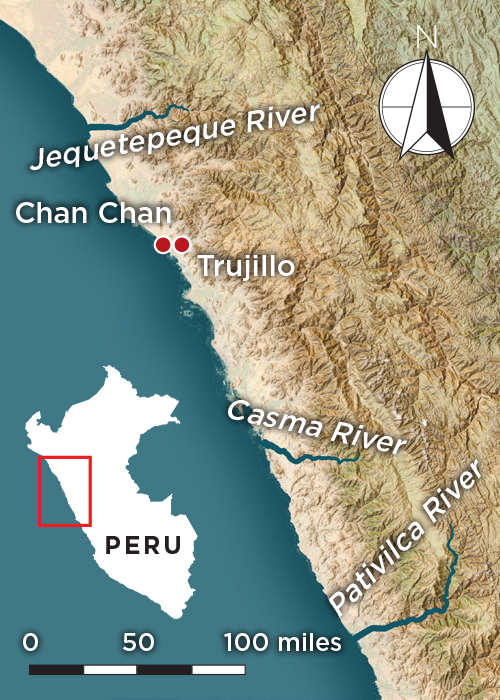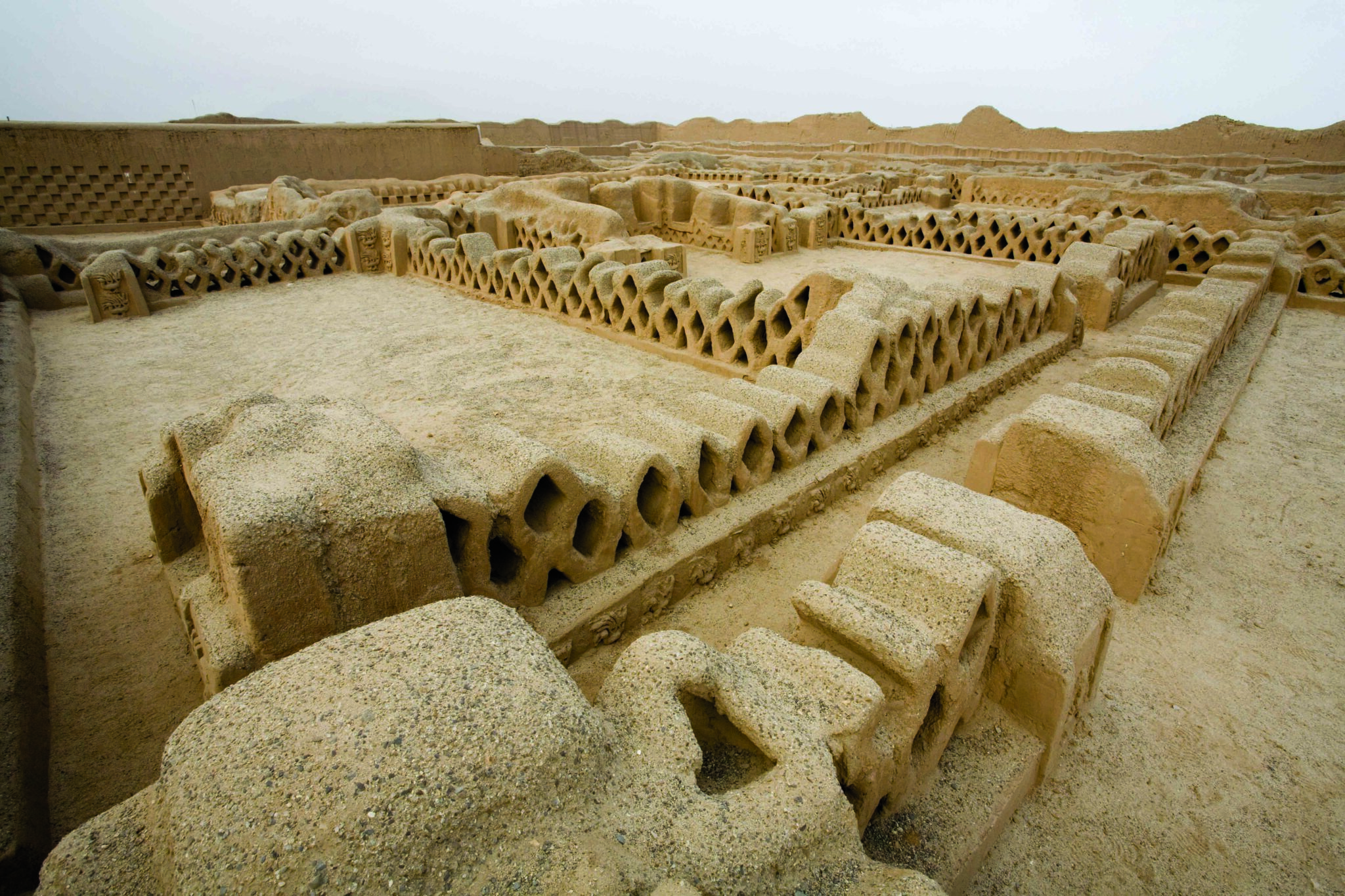Anthropology
Related: About this forumPERU'S GREAT URBAN EXPERIMENT
MAY/JUNE 2023
By Jarrett A. Lobell
A millennium ago, the Chimú built a new way of life in the vast city of Chan Chan

An aerial view of Peru’s Moche Valley shows Chan Chan, a massive city constructed beginning in the early eleventh century A.D. by the rulers of the Kingdom of Chimor, leaders of a people known as the Chimú. Chan Chan sprawled across more than seven square miles and had a population of as many as 40,000. Its dense urban core contained nine separate walled palace enclosures, two of which are seen here.
(OverFlight Stock)
The Moche River Valley in northern Peru was an unlikely place to build a city. Though barely 1,000 feet from the Pacific Ocean, the valley received less than a tenth of an inch of rain per year. Nevertheless, in about A.D. 1000, a people known as the Chimú selected a location in the valley some four miles north of the river and set about making it habitable. Called Chimor in colonial accounts, and now commonly known as Chan Chan, it became the largest urban center in the Americas.

What enabled the Chimú to build a city in this unpopulated coastal desert was their tremendous engineering skill, which they used to create an extensive network of irrigation canals that channeled snowmelt from the Andes Mountains into the Moche River. What drove the Chimú was the desire for a place to call their own. The valley had no one to conquer and evict, no existing structures to raze, and no troubled history to erase. “Chan Chan is an invented city in an artificially irrigated valley,” says archaeologist Gabriel Prieto of the University of Florida. “The Chimú transformed the landscape, created an entirely new society, and became the most powerful rulers in coastal Peru. Chan Chan was an experiment that worked for almost five hundred years.”
The Chimú built their new capital, which spread over more than seven square miles, in a way that distinguished them from other Andean cultures and was intended to reflect their particular social system. “There were enormous social differences and a clear recognition of social distinctions in Chimú society,” says archaeologist Jerry Moore of California State University, Dominguez Hills. “What is so important about Chan Chan is that it shows a very different kind of architectural style from other Andean societies.” Even their myths reveal how, for the Chimú, division between classes was at the center of their worldview. One myth says that royal and noble males were spawned from a gold egg, noblewomen from a silver egg, and everyone else from a copper egg. “I like the egg myth because it suggests that the Chimú understood that social and political inequality is ‘baked in’ to humanity from the beginning,” says anthropologist Robyn Cutright of Centre College.

Chan Chan, which was built up over about 450 years, was the largest adobe city in the world.
The first large-scale explorations of Chan Chan were conducted between 1968 and 1974 by members of the Chan Chan–Moche Valley Project, a massive mapping effort that investigated both the city’s monumental architecture and houses believed to have belonged to the urban working class. In the city plan that emerged, the researchers determined that Chimú kings lived in self-contained adobe royal palace complexes in a dense urban core of about two and half square miles. Each of the nine palaces had a single entrance that strictly controlled access to a zone of twisted, winding corridors leading to a royal residence with kitchens and wells, storerooms overflowing with the king’s treasure, and open plazas to hold feasts, ceremonies, and royal funerals. Many of the walls were covered with depictions of pelicans, fish, marine motifs, and Chimú deities. Seven palaces contained burial platforms intended for the deceased ruler.
More:
https://archaeology.org/issues/may-june-2023/features/peru-chimu-chan-chan/
Bernardo de La Paz
(60,320 posts)Chimu, Tiwanaku, Inca, and others had tremendous skill and knowledge.
The cultures also cultivated food in flooding fields and with canals that supported ducks who made manure that was scavenged for fertilizer, with a good understanding of ecological systems.
Judi Lynn
(164,049 posts)I was just reading about Inca aqueducts last night, was stunned seeing some of the photos of the remaining features of their ancient absolute mastery of designing and moving incredible amounts quickly, efficiently, even through mountains, to population centers and agriculture use. Mind-boggling.
It was tremendous learning, but not surprising, that you are well informed and aware of their achievements. It's so regrettable that so few of the European-descended citizens have any idea any of this ever happened.
Thanks for taking the time to share the information. It was really great to learn.
Warpy
(114,381 posts)and while the location of the city might look odd to modern eyes, its location looks pretty inspired to me, close enough to a fresh water river for irrigation, close enough to the ocean for a steady source of protein, and in an area with scant rainfall, meaning they didn't have to mud up all the adobe walls every year so their houses wouldn't melt. Once built, their construction was likely good for decades.